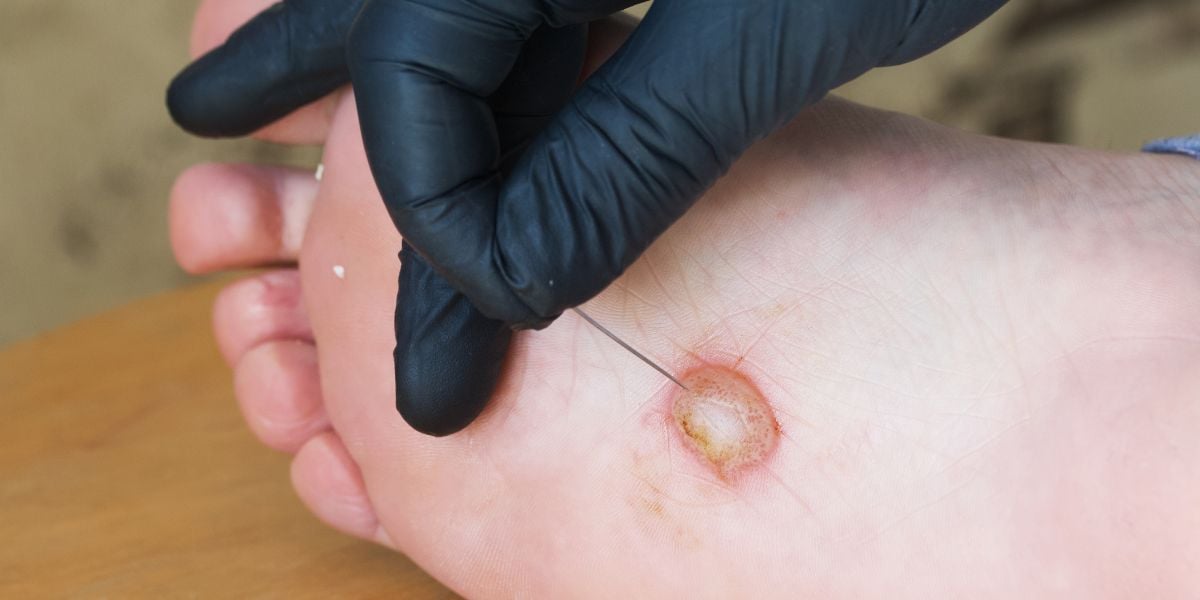Nearly a quarter American seniors grapple with diabetes, a chronic condition that can cause a myriad of complication. In the range of 10 to 15% of diabetics have leg and foot ulcers. If not treated and untreated, these seemingly harmless injuries could become more severe and cause foot ulcers that cause diabetic foot amputation. Foot ulcers account to more than 80 percent of amputations.
Management of diabetes is a complex problem that requires a holistic approach that extends beyond glucose control. Foot care is a linchpin in this endeavor that serves as the primary defence against the growing threat of diabetes-related amputations.

Understanding the Landscape
The complications of diabetes and their treatment are an arduous terrain to navigate. The adversity of foot and leg ulcers in diabetic patients highlights the need for proactive care. As the statistics paint a stark picture and it becomes clear that developing a better comprehension of these complexities is essential to fight against Amputations.
The Amputation Conundrum
The specter of amputation casts a long shadow over people who are struggling with diabetes. It’s a reality that transcends just a few statistics, affecting individuals at a personal scale. From minor cuts to the possibility that diabetic feet may require an amputated foot, the journey is one of intense anxiety.
Daily Foot Care: A Shield against Amputation
The foundation of diabetes amputation prevention lies in daily foot care. This isn’t only about keeping your feet clean; it’s an extremely thorough method for finding and fixing potential problems before they get worse. Each step in the routine every day is crucial to fight diabetic-related amputations.
Vascular specialists: what is their role
Although vascular specialists aren’t involved in the management of diabetes, they play an important role in reducing its complications. To ease leg pain and speed up wound healing, establishing optimal blood flow is a crucial aspect of treatment. With this approach of collaboration The goal is simple: prevent diabetes-related amputations by decreasing the negative effects of this condition.
Amputation Prevention: Strategies
To be able to navigate the dangers of amputation due to diabetes it is necessary to have a mix of alertness, vigilance, and skilled intervention. For individuals grappling with diabetes, taking an active position is vital. Regular visits to doctors, such as vascular specialists can contribute to early detection.
Leg Ulcers, Beyond the Triggers to Consider
Leg ulcers can be a precursor to other, more serious issues. They require our attention. It is essential to recognize the reasons that may result in leg ulcers. If it’s due to poor circulation or neuropathy, or perhaps a combination of these factors, identifying their primary causes will allow the targeted treatment.
Education as empowerment
It is imperative to educate patients with diabetes about the risks of diabetes and the ways they can prevent them. The educational initiatives, in both healthcare settings and the broader community, can create a bridge between awareness and action. Recognizing the implications of seemingly harmless injuries can prompt timely intervention and may even avoid the need for diabetic feet amputation.
Battles between private parties, triumphs for the collective
Amputations related to diabetes is not a solely a single battle; it’s a global victory. Being involved in the support networks of medical professionals or community groups, offers the opportunity to exchange experiences, knowledge and strategies for coping. Faced with amputation risks and emotional trauma, the impact is often immense. Community support networks provide strength and solace.
In the end, the trek through diabetes, leg ulcers and the risk of losing a foot is multi-faceted. Regular foot care is the first line of defense. Vascular experts’ expertise can be an invaluable advantage to avoid problems. Patients suffering from diabetes can decrease the risk of amputation by raising awareness, implementing preventive measures and cultivating an underlying support system.
Leave a Reply